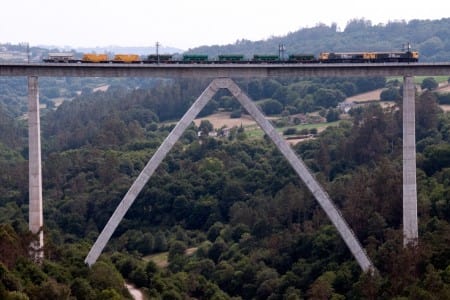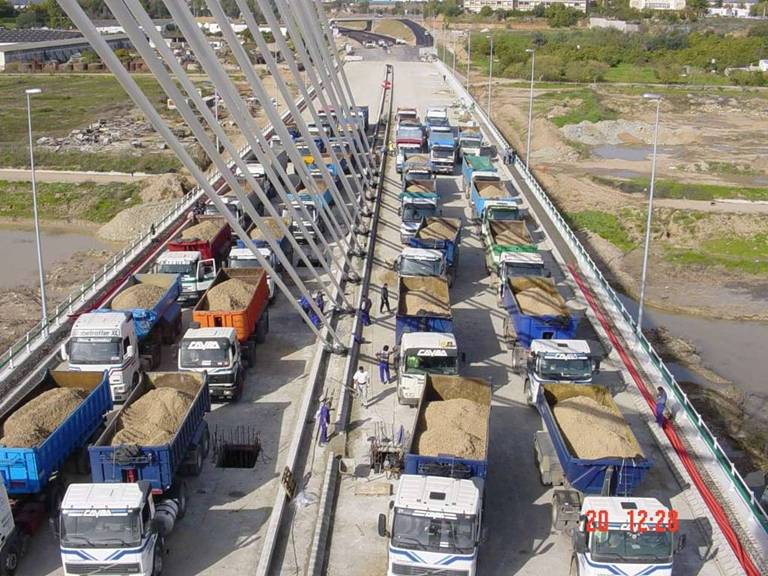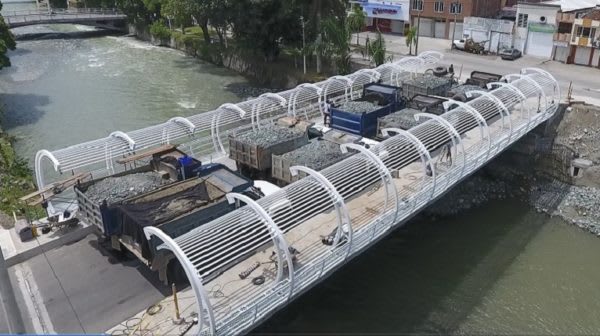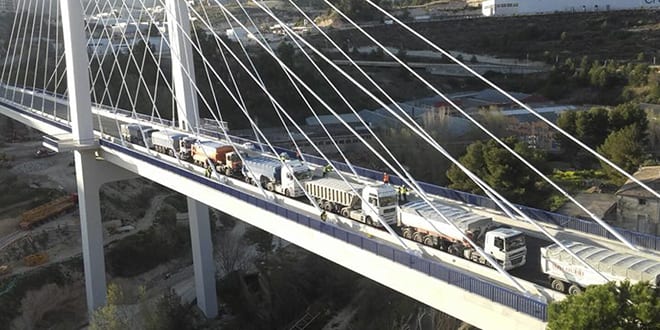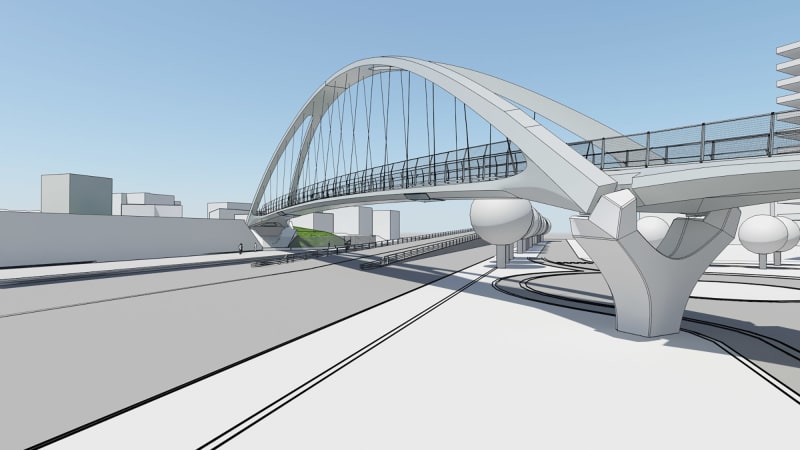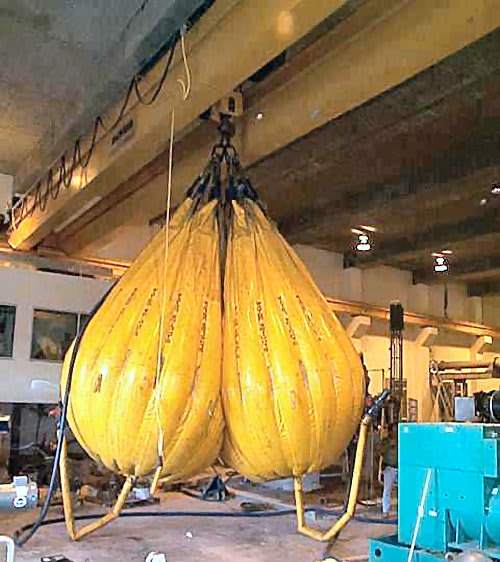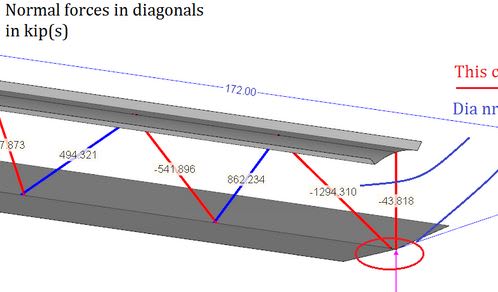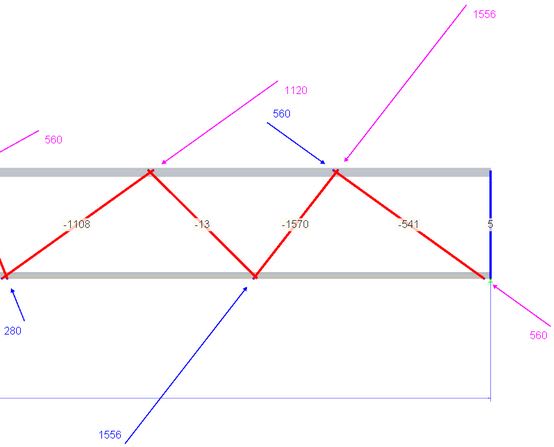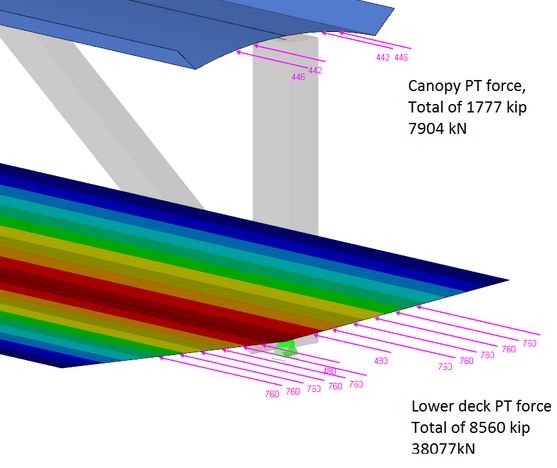greetings again jrs87
I am 100% sure that the designer made an analysis accounting for the time dependent properties of concrete (creep, shinkage, increased strength with time) and post-tensioning (relaxation) with a computer program that accounted for the changes in structural scheme during the relevant construction phases. This is typical of such structures in the State of Florida and there are many commertialy available programs that so so (SAP2000, LUSAS, LARSA, etc...)
We can expect that the analysis would have results at the times of casting the main span, post-tensioning the main span, moving the main span, placing the main span in the supports, casting the back span, stressing the back span tendons, stressing the continuity capony tendons, releasing the falsework, casting the pylon and attaching the stays, end of construction and 10,000 days after the end of construction (and potentially several other intermetiate time and construction phases).
The computer program would have accounted for the fact that the PT was stressed when the strength was 6500 psi and would have given very slightly different results (but not of the magnitude that would cause failure) if it was instructed to streess when the strength would have been 8500 psi.
So, let's see what the designer's calculations tell us or what some brave soul out there like Mr. Kaljas has gotten for all of us.
And BTW, I am sure that they moved the span when they were sure that the concrete strength was 8500 psi. Even if the Contract drawings do not say so in the erection sheets.


